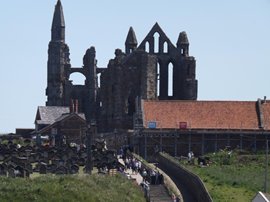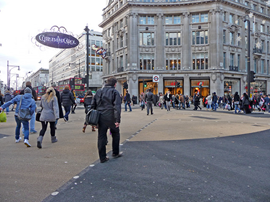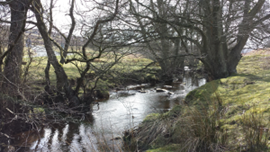Masters of their Craft: the art, architecture and garden design of the Nesfields
Masters of their Craft: the art, architecture and garden design of the Nesfields, Shirley Rose Evans, Lutterworth Press 2014, 228 pages, 55 black and white and 51 colour illustrations.
Think of a Victorian garden and the image that comes to mind is probably a scheme by William Andrews Nesfield. The work of Nesfield and his son William Eden Nesfield was so prolific that their contribution to architectural and garden design in many ways exemplifies the age.
Inspired by the beauty and romance of history, they played an important role in the 19th-century revival of the Jacobean, renaissance and gothic styles. They were commissioned by wealthy patrons across the country and received prestigious public commissions in London; both were also highly accomplished watercolourists and draftsmen. WA Nesfield’s parterre-debroderie, an intricate pattern of highly artificial bedding on a flat plane, became his signature design and the centrepiece of many commissions. But it was the very complexity, level of control and materials used in these designs that eventually led to the style falling from favour.
Shirley Evans, who has spent years researching and publishing articles about the Nesfields, is well placed to produce a study focusing on their lives and work. Privileged access to the family archives, beautiful photographs from Country Life, contemporary publications and original sources have yielded a wealth of information about their lives, interests and designs, so much there seems to be material for a volume dedicated to each man. The flow of the narrative is interrupted by short biographies and context concerning other artists and designers with whom the Nesfields associated, suggesting that the book is aimed at a wide audience, not just architectural and garden historians.
This study provides a wonderful portrait of these Victorian gentlemen, products of their age. It includes many fascinating details, including informative captions from a shrubbery plan, extracts from letters to clients providing insights into design intentions, and quotations from contemporary descriptions of parterre planting.
This level of detail simply invites more questions and analysis. What exactly made William Andrews resign his military commission to become a painter? Which commissions most clearly demonstrate the influence of their painting on landscape design, and how did one commission lead to another? A fuller assessment of the Nesfields’ legacy and influence would have made a useful contribution to the conclusion.
The book includes valuable lists of commissions and of the exhibited watercolours of WA Nesfield. It is referenced and generously illustrated throughout, with their drawings and watercolours demonstrating the Nesfields’ considerable skill. It would have been useful to have dates and sources of all photographs to aid understanding and clarity about what remains or has been restored.
This book is a welcome addition to studies of prominent landscape designers. It will inform greater understanding of the Nesfields’ work and contribution to architectural and garden design, and encourage readers to search out their surviving creations.
This article originally appeared as ‘Nineteenth-century revivals’ in the Institute of Historic Building Conservation’s (IHBC’s) Context 139, published in June 2015. It was written by Barbara Moth, retired historic landscape Consultant.
--Institute of Historic Building Conservation
Related articles on Designing Buildings
IHBC NewsBlog
Notre-Dame Cathedral of Paris reopening: 7-8 December
The reopening is in time for Christmas 2025.
Stirling Prize-winning Salford building to be demolished
The Centenary Building will be bulldozed as part of the wider £2.5bn Crescent regeneration project
Volunteers work to transform 100-year-old ‘hidden’ building into bothy
The building, named Druimnashallag, is located southeast of Oban.
The new ‘Arches for HERs’ Demo site, from the Getty Conservation Institute via HE
It shows how organisations responsible for historic environment records (HER) management can benefit from its powerful features.
ICOMOS-CIF 2024 Symposium celebrates 40th anniversary in Venice
It aims to critically review current practices and theories of conservation of built heritage around the world, and more.
HES establishes new national centre for retrofit of traditional buildings
HES plans to develop the centre follows £1m of funding from UKRI Arts and Humanities Research Council.
High Court rejects oral appeal against tower block decision in historic Bloomsbury
The request was for a full Judicial Review hearing against Camden Council’s approval of a 74m-high tower block in Bloomsbury.
Mayor of London and Government announce bold plans to transform Oxford Street
Plans include turning the road into a traffic-free pedestrianised avenue, creating a beautiful public space.
Crystal Palace Subway, for 160th anniversary
The remarkable Grade II* listed Crystal Palace Subway in South London begins a new era following major restoration.
National Trust brings nature back to an area twice the size of Manchester in less than a decade
The National Trust has achieved its aim of creating or restoring 25,000 hectares of priority habitat on its land by 2025.

















Comments
[edit] To make a comment about this article, click 'Add a comment' above. Separate your comments from any existing comments by inserting a horizontal line.